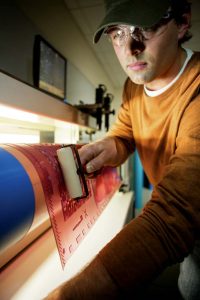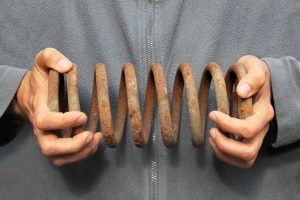Measuring Stickyback - Compression and Density and Hardness …Oh my!

If you see someone measuring a foam mounting tape with a durometer gauge or have done so yourself to measure hardness, density, compressibility… hit PAUSE. With all due respect to individuals using durometer as a measurement of hardness, this is not a correct method of measurement or term that should be used when measuring a compressible (stickyback) tape.
Percentage of compression of the total thickness is the desired (meaningful) unit of measurement when measuring foam mounting tapes. Shore A and D durometer measurements are used on displaceable materials like photopolymer. As you likely know, polymer does not compress, it displaces - which is why there is high dot gain when the plate is on a vinyl non-compressible tape. Under normal applied pressure, cushion stickybacks compress versus displace.
When measuring the durometer of the test specimen it should be 1/4" thick (and yes this applies to plates as well). You can stack materials to get this thickness but it is not ideal because it adds layers on film and adhesives in the case someone tried to measure a foam mounting tape, and it would add layers of hard mylar when stacking plates under 1/4". When measuring durometer of samples under 1/4" you are actually allowing the surface in which the sample rests to affect the measurement. Imagine the difference in measuring a plate on a slab of granite versus resting on a piece of carpet.
Keep in mind that there is more than just the amount of measured compression, i.e. % of thickness, under a pre-determined load. The process of categorizing foam stickyback also takes into consideration if the tape returns to its original thickness and how fast this occurs.

Here's an analogy to further explain why it's like this... If you took a steel spring and wanted to understand the hardness of the material you would not measure the hardness in the direction of compression but rather measure the durometer of the coil itself. If you wanted to measure the compression of the spring you would measure the distance the spring compresses under a set load and returns to its original thickness. Measuring a foam stickyback with a durometer gauge is like measuring the Shore A hardness of an air mattress, and then making a statement that the vinyl mattress has a hardness of "X".
